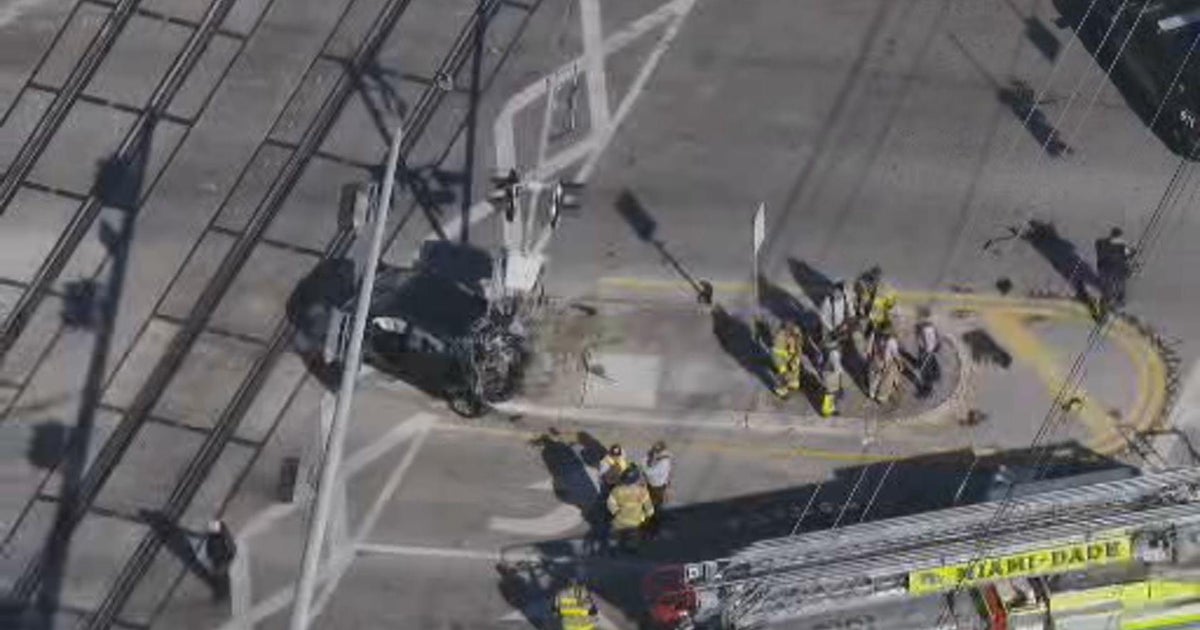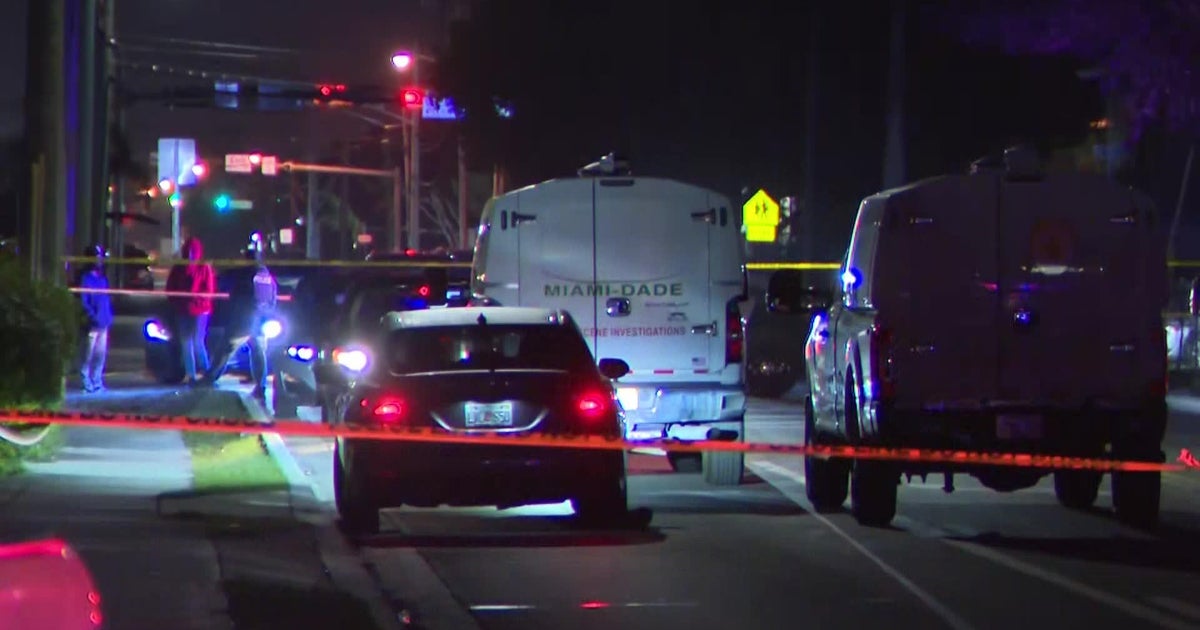Pulitzer Prize Winning Photos Arrive In Miami
MIAMI (CBSMiami) -- It was 2008 in the peak of hurricane season, when the fourth storm to hit Haiti in month delivered a devastating blow.
"I never seen anything like it. And I hope I never see anything like it again."
Miami Herald photographer Patrick Farrell recalled. Farrell landed in the middle of the devastation and to this day doesn't know how he snapped a single photo.
"I know I was trembling when I was taking photographs. When Franz reached out to me and said 'give me a picture. Give me a picture.' I was like I'll do anything I can for you but I don't think I can. I don't know what to do. I just shot photographs," he said.
It is one single photo that still brings him to tears today. A father kissing his lifeless daughter. The village surrounding him in grief.
"We had been told there were children in this town. People tried to lead us up to it and lead us to this area where all these little babies were on the ground," he said.
Click here to check out photos of this story.
As Farrell tells the story he pauses to wipe tears away.
"I saw them and Franz pushed through. He had a big jug of water. He picked her up and started to take her clothes off. He asked me to give him a picture. 'this is my daughter.' 'This is my daughter.' Farrell said. Farrell believes the father wanted him to take the photo so the world would see what had happened. The father fought off the coroner and police who were tasked with collecting the bodies of the children. "He wanted to get her a dress because he knew they were going to take her away and bury her and he wanted her to look nice."
To this day Farrell has a hard time digesting that moment. "At the time my kids were 8 and 9. As a father you think oh come-on. How would you deal with this? How would you? This is the greatest loss you can imagine. Losing your children,"he said.
Farrell's photographs would hit the cover of the Miami Herald the next day, moving the world to respond. Seven months later his photos won the Pulitzer prize. "It's a great day but along with that you are, especially covering something as horrifying as this, you experience a little bit of guilt and grief," Farrell explained.
The winning photos from that day are now on display at the Frost Art Museum. It's part of a traveling exhibit of Pulitzer Prize winning photographs.
"It's humbling," Farrell says. That may be an understatement. Every year photojournalists from around the world compete for spot news. Just two win and it's an elite list.
There is Al Diaz's shot of federal agents taking Elian or a firefighter holding a lifeless baby at the Oklahoma city bombing, Senator Barrack Obama running to be President, the horror of Columbine and the back story of a President and his wife trying to cover-up a scandal.
The exhibit is really a tribute to world history. Cyma Rubin, the exhibits creator and curator, put the collection together in 1998.
"Not because I thought it needed to be done. It was because I realized that it had never been done," Rubin explained.
She thought it would be an easy task. Rubin found it was not. "
I went up to the archives thinking I would find everything, but it's just a closet with some pictures on the floor." She would spend four years uncovering seven decades of historic negatives. She made massive prints of the images. Images, just like Ferrell's, with an amazing story to tell. When asked which is her favorite she smiles.
"Everyone of them. I told you, it's like asking a mother who has more than one child, 'who's your favorite?' Never. There is something. I've seen these pictures hundreds and hundreds of times. I always find something new,"she said.
Cyma thinks everyone should see these images, so does Farrell.
"Oh yeah. This is the greatest set of photojournalism in one space anywhere in the world. I'm convinced of that. There are images in here that influence me when I was in school and made me want to become a photographer, a news photographer," he recalled.
Rubin added the photos carry so much more than a moment.
"It's an awakening to what photographers accomplish as photojournalist because in many cases, as a result of their work, laws were changed. There was new incentive and Patrick Farrell photos in Haiti, they brought about immediate relief. The photographer is there for us. It's their eyes for us."
Farrell believes the images further the power of a still.
"You don't want people to forget and I think the power of the still image, you can sit there and soak it in, " said Farrell.
And when you soak it in, you notice the photographers are not just capturing a moment, they sacrifice part of themselves for that moment, just as Farrell did in Haiti. "He's a great photographer. He's a great humanitarian because he suffers with them. He takes the pictures to let the world know about the suffering but he suffers with them. This happens to many many photojournalists. Not only Pulitzer prize winning but real photo journalist. They are affected," Rubin said.
And you can do that for free now through April 20th at the Frost Art Museum. For more details go http://thefrost.fiu.edu/ex_future.htm
Click here for a personal entry on the story. For more photos of this story, please click here.



